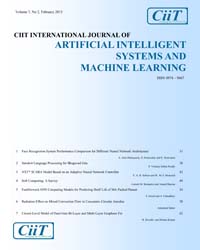Deep Learning Applications of the Present and Future
Subscribe/Renew Journal
Throughout the most recent years Deep learning strategies have been appeared to beat past cutting edge AI procedures in a few fields, with PC vision being quite possibly the most unmistakable cases. This survey paper gives a short outline of the absolute most huge Deep learning plans utilized in PC vision issues, that is, Convolutional Neural Networks, Deep Boltzmann Machines and Deep Belief Networks, and Stacked Denoising Autoencoders. A concise record of their set of experiences, construction, benefits, and limits is given, trailed by a depiction of their applications in different PC vision undertakings, for example, object identification, face acknowledgment, activity and action acknowledgment, and human posture assessment. At long last, a short outline is given of future headings in planning Deep learning plans for PC vision issues and the difficulties included in that.



